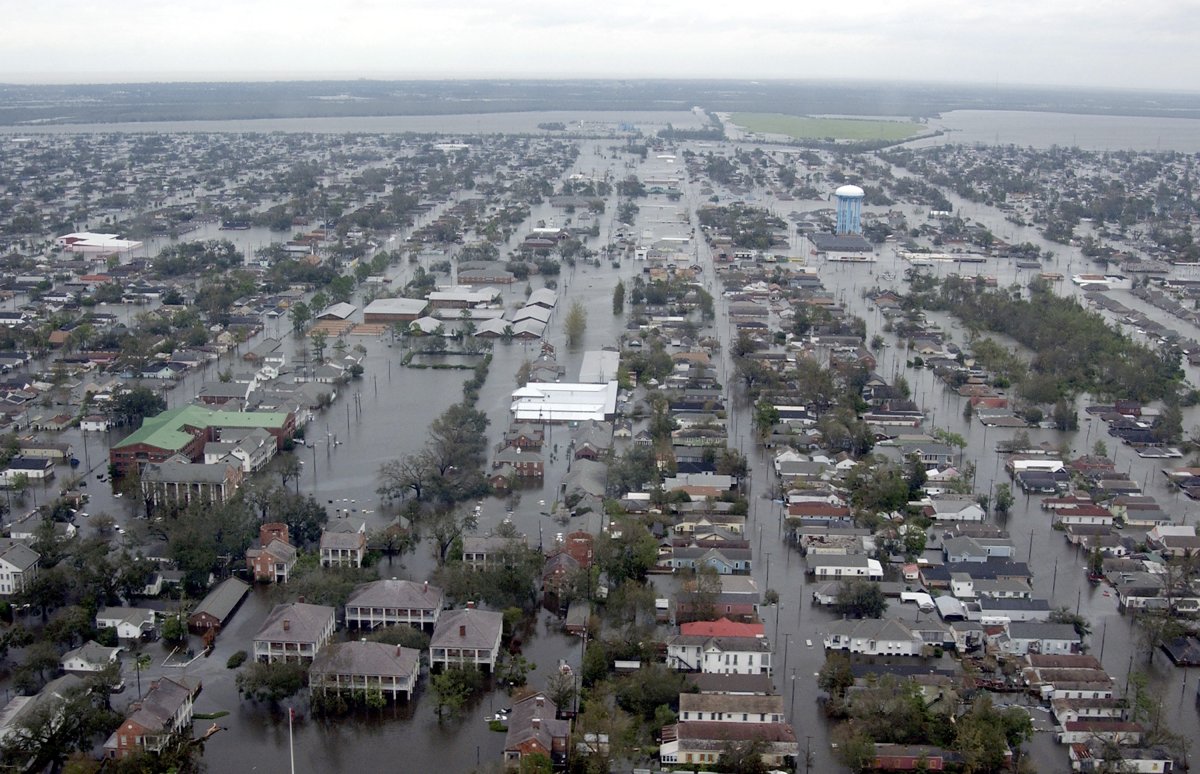Following the dissipation of Hurricane Helene, which has left over 230 dead and caused billions in damage across the Southeast, concerns have arisen over the level of funding being granted to survivors of the category-4 cyclone.
A political storm has already erupted over the level of funding being provided to the storm-hit communities – which include those in the swing states of North Carolina and Georgia.
Last week, US Homeland Security Secretary Alejandro Mayorkas said that, while the Federal Emergency Management Agency (FEMA) was able to meet the immediate disaster relief needs following the hurricane, the agency had insufficient funds to “make it through the season.”

The Rocky Broad River flows into Lake Lure and overflows the town with debris from Chimney Rock, North Carolina after heavy rains from Hurricane Helene on September 28, 2024, in Lake Lure, North Carolina. Approximately six feet of debris piled on the bridge from Lake Lure to Chimney Rock, blocking access.
Melissa Sue Gerrits/Getty Images
Republican nominee and former President Donald Trump claimed that FEMA’s financial troubles were due to the agency using its budget to help undocumented immigrants, telling rallygoers on Thursday that “Kamala spent all her FEMA money—billions of dollars—on housing for illegal migrants.”
FEMA has responded to the statement, with acting director of the agency’s Office of Response and Recovery saying: “FEMA absolutely has enough money for Helene response right now,” and FEMA administrator Deanne Criswell calling Trump’s claim “frankly ridiculous, and just plain false.”
However, the White House has acknowledged that, while FEMA has sufficient funds “for the immediate emergency response phase,” Congress may need to approve additional funding once the full scale of recovery efforts have been assessed.
Hurricane Helene’s disaster relief effort is at an early stage and so total funding can still rise beyond the current figures, but here Newsweek compares the response thus far to three other catastrophic American storms.
FEMA Funding for Hurricane Helene
The storm has already prompted a significant response from the agency, which on Sunday said that it had undertook “one of the largest mobilizations of federal personnel, partners and resources in recent history.”
FEMA said that federal assistance provided to survivors had “surpassed $137 million,” and that it was “remaining steadfast in helping communities recover and rebuild.” FEMA has deployed personnel and provided supplies for the storm-hit communities, with over 14.9 million meals and 13.9 million liters of water already shipped to the region.
FEMA has approved over $30 million in housing and other types of assistance in North Carolina,, $71 million in Florida, $5.7 million in South Carolina, $30 million in Georgia, $330,000 in Virginia and $175,000 in Tennessee.
In addition, the U.S. Department of Transportation’s Federal Highway Administration (FHWA) announced that it would free up $100 million in Emergency Relief funds for the North Carolina Department of Transportation to “help pay for the costs of immediate emergency work resulting from Hurricane Helene flood damage.” On Saturday, the FHWA also announced the immediate release of $32 million in funds for the Tennessee Department of Transportation to support emergency repair work in the state.
Funding for Hurricane Katrina
Hurricane Katrina, which tore through Florida and the Deep South in August 2005, is one of the deadliest and costliest natural disasters to ever hit the U.S.
Causing close to 2,000 fatalities and an estimated $125 billion in damages, the federal response to the storm was understandably substantial.
In early September, Congress approved $10.5 billion in aid for the survivors without any debate in the House or Senate. On September 7, an additional $51.8 billion funding package was passed by both houses.

Flooded neighborhoods can be seen as the Coast Guard conducts initial Hurricane Katrina damage assessment overflights August 29, 2005 in New Orleans, Louisiana.
Kyle Niemi/US Coast Guard via Getty Images
According to the Library of Congress’s Congressional Research Service, a total of $121.7 billion in hurricane relief was allocated for disaster relief following Katrina, as well as the less destructive Hurricanes Rita (September 2005), Wilma (October 2005), Gustav (August 2008), and Ike (September 2008).
Of this, around $53.8 billion – worth around $86.7 billion in 2024 terms – was appropriated to the Department of Homeland Security, which primarily went through the FEMA-administered Disaster Relief Fund.
In addition, around $27 billion went through the Department of Housing and Urban Development, with a further $25 billion appropriated to the Department of Defense to undertake engineering and construction activities.
Funding for Hurricane Andrew
Hurricane Andrew struck the Bahamas and the Southeastern U.S. in August 1992, wreaking significant damage on the South East, while also also hitting many Mid-Atlantic states.
The federal response was substantial, and focused on Florida and Louisiana, which suffered the most devastation after the category-5 hurricane.
A relief effort was implemented by President George H.W. Bush, which included an $11.1 billion disaster relief package, signed into law in September, and was then the largest disaster relief package in history.
According to 2003 FEMA records, the agency’s relief costs following Andrew reached over $1.8 billion, or around $3.2 billion in 2024 amounts, which comprised hazard mitigation grants, assistance programs, administrative costs and other disaster relief associated efforts.
A 1995 Congressional Research Service report outlined that FEMA had spent $1.83 billion on the disaster, raising the current-day cost estimate to some $3.8 billion.
Funding for Hurricane Sandy
In October 2012, Hurricane Sandy made its way through the Caribbean, before striking the densely populated Mid-Atlantic states.
Sandy was the second-largest Atlantic storm on record, impacting the East Coast from Florida to Maine, and extending inland to states such as West Virginia, Ohio, and Indiana.
Congress allocated over $50 billion to fund recovery efforts following Sandy, around $17 billion of was devoted to projects in New York City where much of the damage had occurred.

Waves break in front of a destroyed amusement park wrecked by Hurricane Sandy on October 31, 2012 in Seaside Heights, New Jersey. At least 50 people were reportedly killed in the U.S. by Sandy with New Jersey suffering massive damage and power outages.
Mario Tama/Getty Images
According to the Congressional Budget Office, FEMA spent around $10 billion (in 2022 dollars) in response efforts in the three years following Hurricane Sandy. However, many of the related projects – which included efforts to mitigate the impact of future disasters – remained ongoing past 2015.
In October 2017, FEMA said that it had contributed “more than $25.5 billion” in recovery efforts for New York and New Jersey alone as a result of Hurricane Sandy. This figure – around $32.8 billion in 2024 – comprised around $15 billion spent on debris removal, as well as direct financial assistance and mitigation projects to reduce the damage of future storms.
How Will Helene Compare?
It appears as though FEMA’s immediate response to Helene – at least in dollar terms – pales in comparison to that of other major American storms, despite the hurricane being the deadliest to strike the U.S. mainland since Katrina.
However, as with all natural disasters, the true scale of damage wrought by Hurricane Helene will be difficult to assess for years to come, as officials continue to weigh the extent of the destruction, as well as what is needed to bring the affected communities back to life.
As a result, FEMA may need to allocate far more than the $137 million that has so far doled out to the disaster-hit areas, making the agency’s apparent financial woes a cause for increasing concern.
Do you have a story we should be covering? Do you have any questions about this article? Contact LiveNews@newsweek.com.




